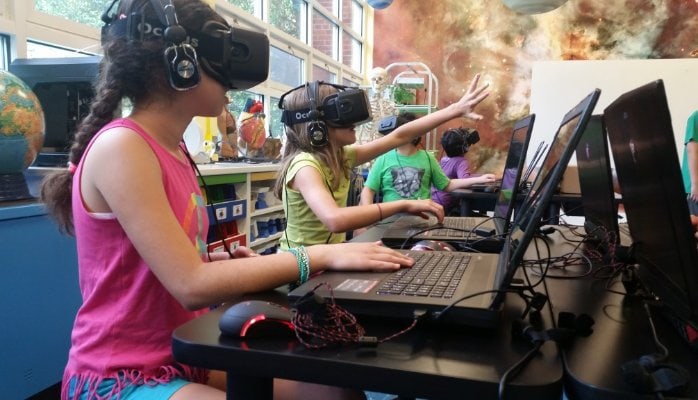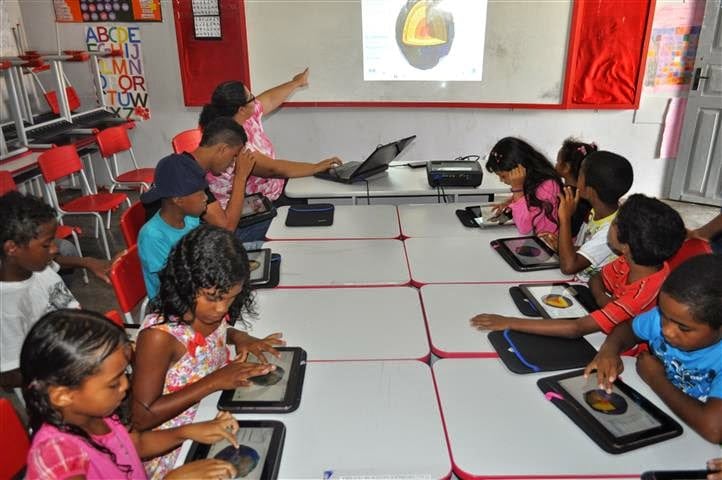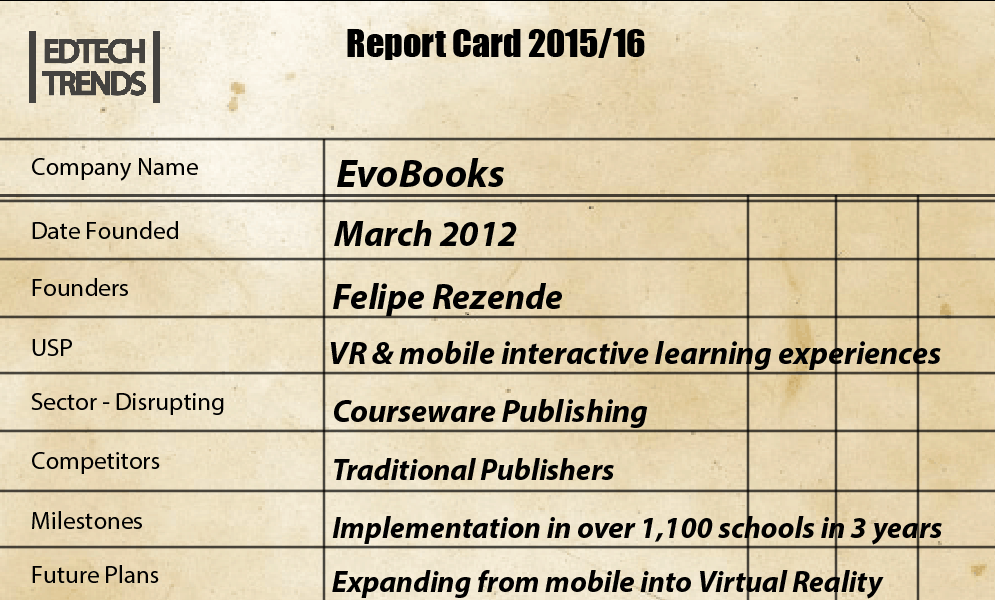Immersive technologies will transform teaching resources, but while we probably won’t see the death of the book, reading experiences are set to change for the next generation of students.
One of the greatest fears people have about VR is that it will be socially alienating, but these experiences should not isolate students in alternative realities, but use social interaction as much as possible Click To TweetMost of us grew up with a schooling system based on Knowledge transfer. The assumption was that this knowledge was contained mostly in books, and should be delivered through mechanisms such as exercises, drills and tests. Teachers have, of course, always found ways of further engaging students with creative lesson planning, but in the digital age, there are a lot of new tools to help them do this.
In a recent trip to Brazil, I caught up with Felipe Rezende, CEO of EvoBooks, a start-up based near São Paulo that has supported over 1000 schools in integrating such digital tools into the curriculum.
“Increasingly, we will come to think of education as a series of enriching life experiences rather than a straightforward transfer of knowledge,” he explains “We now have Virtual Reality technology to enable us to create immersion and enhance engagement, but in order for those experiences to be truly effective, they must be well designed to be engaging, immersive and relevant. We’ve seen this shift over the past 4 years as we worked to build these on mobile and make them accessible to schools.”
He emphasizes how the close relationships his team built with teachers, parents and students informed the development of hundreds of classroom hours of “deep and complete learning experiences” across core subjects such as Maths, Sciences, Biology, Chemistry, Languages, Physics, History and Geography.
“It is not enough to have digital learning experiences that are well-developed, interactive and aesthetically pleasing if there isn’t a clearly defined pedagogical strategy designed to boost learning outcomes. These new experiences must be in every sense superior to the traditional non-digital alternatives, so the educational community can see real value in these investments,” he stresses.
Rezende says his platform stands at the intersection between educational incumbents and technology, providing clear structure and detailed lesson plans with minute-by-minute suggestions of how to manage classroom workflow, but in a much more interactive and engaging way than what he describes as “your standard PDF, or Sage on Stage videos”
“Let’s be absolutely clear: teachers are the cornerstones of the educational process, and these tools in no way replace what they do, quite the contrary. Education is a much more complex process than most of us – who are not teachers – realise. The greatest danger in adopting new technology into the classroom is precisely that it will alienate teachers. It’s important that we see ourselves as an education company just as much as a technology company, as that mind-set enables us to push the limits of what is possible in the digital age without compromising on educational consistency.”
This involves providing an implementation framework, including training and professional development introducing teachers to the new technology and helping them put it to practical use in the classroom, within the context of what they are teaching. As we argued in a recent EdTech Trends post featuring Skoolee, education is about a lot more than just performing well in standardized exams, and also involves the development of social and emotional skills. This means empowering teachers through technology so that they can better leverage their personal knowledge of each student to build better social learning dynamics in the classroom.
Most of us grew up in a tranfer-based schooling system where the assumption was that knowledge was contained in books, and should be delivered through mechanisms such as exercises, drills and tests Click To TweetWith only about US $1M in funding, EvoBooks has so far managed to grow its team to over 60 people, and now runs a successful business model where schools pay a fee per student enrolled in the program. Many thousands have used their materials since the company launched in 2012, but Rezende believes they have only started to scratch the surface of a market worth an estimated US$ 1Bn in Brazil alone, and about 50 times that amount globally. Yet he is keen to point out that in spite of being a for-profit company, these experiences are not exclusively aimed just at those who can afford them, and is proud of having rolled out the programmes at many schools in underprivileged communities as well.
With about US $1M in funding, EvoBooks has managed to grow its team to over 60 people, and runs a successful business model where schools pay a fee per student enrolled in the program Click To Tweet“The future is probably going to be more exciting than any of us can imagine. I see all content – educational or not – evolving into a more organic, interactive and immersive experience. All our environments such as home, work, schools and public places will have many different screens with which we interact with the digital world to enhance our own reality. That includes augmented and virtual reality devices, which I believe will have a huge positive impact on education, and we’re already starting to see some of that.”
The company has, in fact, now set its sights on the booming Virtual Reality market, where they see huge scope for developing new educational content. Rezende points out that although VR technology has been around for decades, it is only within the last couple of years that advances in graphic processing, sensors, screens and mobile technology have allowed content developers to enable a true sense of presence in these virtual environments.
The future is probably going to be more exciting than any of us can imagine. I see all content – educational or not – evolving into a more organic, interactive and immersive experience Click To Tweet“One of the greatest fears people have about VR is that it will be socially alienating, but these experiences should not isolate students in alternative realities, but rather use social interaction as much as possible as part of creating truly immersive learning experiences. Personally I’m very excited about this, as I have always been very engaged with technology from a very early age. I got first Nintendo when I was 2, and never looked back…At 10 I was having robotics classes using Logo programming language and by the time I got to my teens I would build my own gaming PCs. It was all very compartmentalised from the core curricula disciplines, though, and the difference for students these days is that technology is embedded in everything we do, so our education methods and materials really need to reflect that.”
Tech Trends’ Virtual Reality Consultancy services offers support for companies looking to enhance brand strategy with immersive technologies such as Virtual, Augmented and Mixed Reality.
Alice Bonasio is a VR Consultant and Tech Trends’ Editor in Chief. She also regularly writes for Fast Company, Ars Technica, Quartz, Wired and others. Connect with her on LinkedIn and follow @alicebonasio on Twitter.











